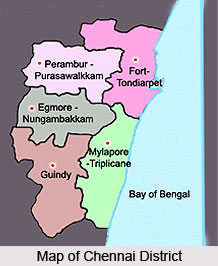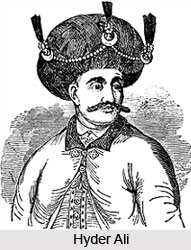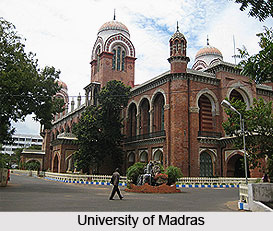 History of Chennai district speaks about the role of the district as an important centre of culture and education in South India. Chennai, originally known as Madras Patnam, was located in the province of Tondaimandalam, an area lying between Pennar river of Nellore and the Pennar river of Cuddalore. The capital of the province was Kancheepuram.Tondaimandalam was ruled in the second century A.D. by Tondaiman Ilam Tiraiyan, who was a representative of the Chola family at Kanchipuram. It is believed that Ilam Tiraiyan must have subdued Kurumbas, the original inhabitants of the region and established his rule over Tondaimandalam.
History of Chennai district speaks about the role of the district as an important centre of culture and education in South India. Chennai, originally known as Madras Patnam, was located in the province of Tondaimandalam, an area lying between Pennar river of Nellore and the Pennar river of Cuddalore. The capital of the province was Kancheepuram.Tondaimandalam was ruled in the second century A.D. by Tondaiman Ilam Tiraiyan, who was a representative of the Chola family at Kanchipuram. It is believed that Ilam Tiraiyan must have subdued Kurumbas, the original inhabitants of the region and established his rule over Tondaimandalam.
Subsequent to Ilam Tiraiyan, the region seemed to have been ruled by the Chola Prince Ilam Killi. The Chola occupation of Tondaimandalam was put to an end by the Andhra Satavahana incursions from the north under their King Pulumayi II. They appointed chieftains to look after the Kanchipuram region. Bappaswami, who is regarded as the first ruler of the Pallava Dynasty who ruled from Kancheepuram, was himself a chieftain at Kancheepuram under the Satavahana Dynasty in the beginning of the 3rd century A.D. The Pallavas, who had so far been merely viceroys, became independent rulers of Kancheepuram and its surrounding areas.
The Pallavas commanded this region from the beginning of the third century A.D. to the closing years of the ninth century except for the interval of some decades when the region was under Kalabharas. Pallavas were defeated by the Chola under Aditya-I by about eight hundred and seventy nine A.D. and the region was brought under Chola rule. Pandyas under Jatavarman Sundara Pandya rose to power and the region was brought under Pandya Dynasty by putting an end to Chola supremacy in twelve hundred and sixty four A.D. Pandya`s rule over this region lasted a little over half a century followed by Bahmini kingdom with the extension of Delhi Sultanate under Khiliji Dynasty especially under the rule of Ala-ud-din Khilji, a pioneer of all revenue works. During 1361, Kumara Kampana II, the son of Vijayanagar King, Bukka I conquered and established Vijayanagar rule in Tondaimandalam.
The Vijayanagar rulers appointed chieftain known as Nayaks who ruled over the different regions of the province almost independently. Damarla Venkatapathy Nayak, an influential chieftain under Venkata III, who was in-charge of the area of the present Chennai district, gave the grant of a piece of land lying between the river Cooum almost at the point it enters the sea in the year 1639 and on that land was founded the Fort St. George exactly for business considerations. In honour of Chennappa Nayak, father of Venkatapathy Nayak, who controlled the entire coastal country from Pulicat in the north to the Portuguese settlement of Santhome, the settlement which had grown up around Fort St. George was named after Chennapatanam. The older area called the Madraspatnam which is to the north of it.  Later on, the intervening space between the older northern sites of Madraspatnam came to be quickly built over with houses of the new settlers (as the two expanded) and that the two villages became virtually one town. While the official centre of the settlement was designated Fort St. George, the British applied the name Madras Patnam to the combined town. Golkonda forces under General Mir Jumla conquered Chennai (Madras) in the year 1646 and brought Chennai and its immediate surroundings under his control. On the fall of Golkonda in 1687, the region came under the rule of the Mughal Emperors of Delhi.
Later on, the intervening space between the older northern sites of Madraspatnam came to be quickly built over with houses of the new settlers (as the two expanded) and that the two villages became virtually one town. While the official centre of the settlement was designated Fort St. George, the British applied the name Madras Patnam to the combined town. Golkonda forces under General Mir Jumla conquered Chennai (Madras) in the year 1646 and brought Chennai and its immediate surroundings under his control. On the fall of Golkonda in 1687, the region came under the rule of the Mughal Emperors of Delhi.
Firmans were issued by the Mughal Emperor granting the rights of English company in the district of Chennai. In the later part of the seventeenth century, Chennai steadily progressed during the period of Agency and under many Governors. During the regime of Governor Elihi Yale from 1687 to 1692, the most important event was the formation of the institution of a mayor and Corporation for the district of Chennai. In 1693, a perwanna was received from the local Nawab granting the towns Tondiarpet, Purasawalkam and Egmore to the company. Thomas Pitt became the Governor of Chennai in 1698 and governed for eleven years. This period witnessed remarkable development of trade and increase in wealth.
The important events in this period were the blockade of Chennai by Daud Khan and its repulsion and the acquisition of additional suburban villages by the English. Thiruvottiyur, Vysarpadi, Kathivakkam, Nungambakkam and Satangadu were made as a free gift to the English in 1708. In 1735, Chintadripet was taken over and in 1742 Vepery, Perambur and Periamet were presented to the British. Nicholas Morse was the Governor from 1744 to 1746. The major event during his time was the outbreak of war between England and French and the struggle for supremacy between the French and the English in South India. Chennai was captured by the French in 1744 but consequent on the treaty of peace of Aix-La-Chapelle, Chennai was restored to the English in 1749.
George Pigot was the Governor from 1755 to 1763 and the period was remarkable for the fact that the Company formed a trading corporation, owning isolated towns, forts and factories, and became a ruling power controlling vast territories. Charles Bourchier became Governor in 1767 and in his reign, Hyder Ali, who usurped the Sovereignty of Mysore joined hands with the Nizam and began an offensive on Chennai. In 1761, a treaty was signed between Hyder Ali and the Company for an alliance and mutual restitution of the conquests. The Governance of the Carnatic became the responsibility of the Chennai Government which could not maintain a large army without the revenue of Nawabs. In 1763, the English got the district of Chengalpattu known as Chennai Jagir for the maintenance of the army. Lord Macartney took charge of the Chennai Government in 1781. During his period, Chennai became an important naval base. Major General Medows became Governor in 1790. The position of the English was made secure in South India. The elimination of other foreign power and settlement of the limits of native territory gave stability and paved the way for an era of commercial development. In 1792, in a new treaty, Mohammed Ali handed over the entire management of the Carnatic to the English and accepted in return a pension. Another important event of this period was the outbreak of Anglo-Mysore wars. Tipu Sultan was killed in 1799 and the whole of Carnatic ceded to the British.
 The supremacy of the English in South India was established. The present day territorial limits of the district of Chennai existed in the shape of scattered villages for centuries before the advent of the British. In the process of growth, many villages got agglomerated into a single unit. The shape and extent of the district which existed during 1939-40 was reached even during the opening years of nineteenth century. The period in between 1803 to 1827 represents consolidation and development of institutions. Sir Edward Elliot was the important Governor of Chennai during this period. He appointed a Judicial Commission with Munro as its President in 1814. Several reforms in the administrative system were made by the Commission. Sir Thomas Munro became the Governor in 1820 and continued till 1827. He tried his best to improve literacy. He started English education in Chennai and founded a body called Board of Public Instructions to improve and direct public education. Major improvement made to Chennai district during the first half of the nineteenth century was the progress made in the establishment of institutions for professional and technical education.
The supremacy of the English in South India was established. The present day territorial limits of the district of Chennai existed in the shape of scattered villages for centuries before the advent of the British. In the process of growth, many villages got agglomerated into a single unit. The shape and extent of the district which existed during 1939-40 was reached even during the opening years of nineteenth century. The period in between 1803 to 1827 represents consolidation and development of institutions. Sir Edward Elliot was the important Governor of Chennai during this period. He appointed a Judicial Commission with Munro as its President in 1814. Several reforms in the administrative system were made by the Commission. Sir Thomas Munro became the Governor in 1820 and continued till 1827. He tried his best to improve literacy. He started English education in Chennai and founded a body called Board of Public Instructions to improve and direct public education. Major improvement made to Chennai district during the first half of the nineteenth century was the progress made in the establishment of institutions for professional and technical education.
School of Industrial Art was started in 1850, Civil Engineering College in 1834 and Madras Medical College in 1835, etc. The University of Madras was started in September 1857. The Chennai High Court was formed in June 1862. The Railway Company in Chennai was established in July 1845. The first construction work began on ninth June 1853 and in 1858; South Indian Railway was formed having Chennai as the Railway Headquarters. Lord Hobart who was the Governor from 1872 to 1875 initiated Chennai Harbour project. The Congress party came to life during the period 1881-90. The Indian National Congress held its session in 1887 at Chennai district.
The First Governor of Chennai in the twentieth century was Lord Ampthill who served from 1901 to 1906. Sir Arthur Law was the Governor from 1906 to 1911 and Lord Pentland from 1912 to 1919. The prominent events during this period were the establishment of Chennai Electric Supply Corporation in 1906 and opening of Indian Bank in 1907. During 1934 and 1936 for a short period, two Indians Sir M.D. Usman Sahib and Sir K. Venkatareddy Naidu acted as Governors of Chennai. In 1937 the Ministry of Chakravarti Rajagopalachari came into power for two years. The influence of the Governors on the administration considerably diminished. The British departed on fifteenth August 1947 but Chennai district remained as a standing monument of what the British have done to India.






